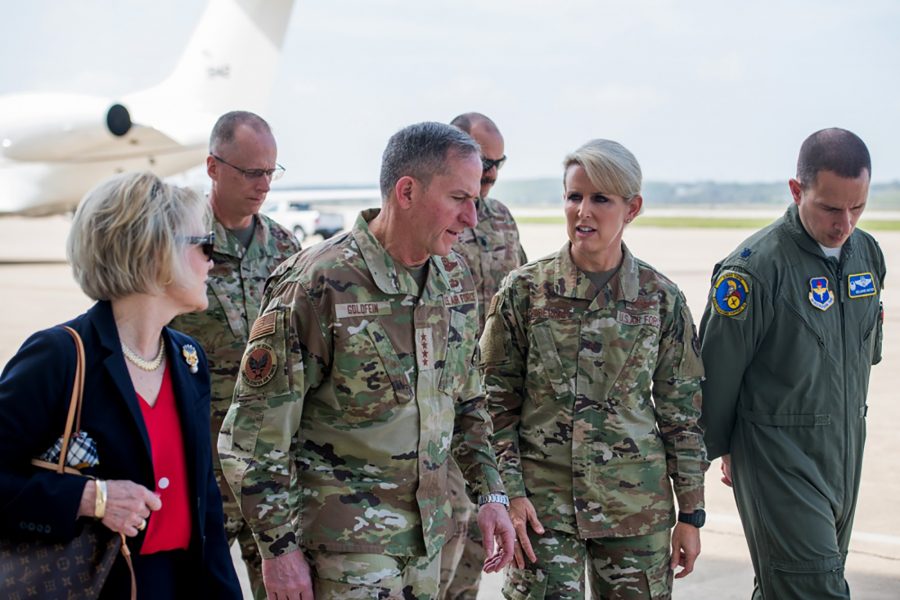The Air Force’s rapid global mobility mission has ramped up to address the outbreak of the new coronavirus, with USAF aircraft ferrying test kits in support of the Department of Health and Human Services while the U.S. tries to stem the COVID-19 threat.
Defense One reported that on March 17 a C-17 brought 500,000 COVID-19 test kits from Italy to Memphis, Tenn. Chief of Staff Gen David Goldfein confirmed the flight in a briefing with reporters on March 18, saying there was a “pretty significant movement” into Memphis, which is a hub for commercial cargo flights to disperse the tests. USAF mobility aircraft also are flying spare parts into bases like Aviano Air Base, Italy, so they can keep flying even though the surrounding region is in lockdown, and bringing cargo back to the U.S.
As it became clear that gray-tail mobility aircraft would need to keep flying into affected areas, the service implemented new procedures to keep Airmen safe, Goldfein said. This includes screenings, such as checking temperatures and keeping airmen in isolation when required. While the aircraft itself is considered a clean environment, it’s when crews move to their rooms for rest that concerns arise. For now, the service is “minimizing movement, keeping them in a bubble,” Goldfein said.
As of March 18, seven Active duty Airmen have tested positive for the COVID-19 virus, Goldfein said.
Vice Chairman of the Joint Chiefs of Staff Gen. John Hyten and Deputy Defense Secretary David Norquist are the Pentagon’s liaison into the White House’s task force on the coronavirus, and have been guiding the movement requirement. The service is “working requests daily” with new requirements coming down every day, Goldfein said.
The Air Force is not worried about the capacity—“We can move a lot of test kits on a C-17 or a C-5,” Goldfein said. However, an aircraft being tasked for a test kit delivery means it is not available for another mission or training sortie, so the service and U.S. Transportation Command have to balance the needs.
The service, as of now, is able to maintain its regular flying hour requirement and is continuing undergraduate pilot training. However, Goldfein said he is “leaving it to the local commanders to adjust the flying schedule, ensuring they are taking care of people, making sure the mission happens.” This includes working with local communities to find the right operational tempo. Goldfein noted there is no “one-size-fits-all” program for all bases.
Commanders of air operations centers, theater air control centers, and other critical operational headquarters are physically changing how the rooms are set up to provide more space between personnel to help mitigate risk in areas where people are generally in close quarters, Goldfein said.
Goldfein himself is teleworking three days per week, and avoiding other key leaders, such as Air Force Secretary Barbara Barrett and Vice Chief of Staff Gen. Seve Wilson, to further mitigate risk.
The service has been forced to cancel or postpone some major events. For example, Red Flag-Alaska, which was to be held at Eielson Air Force Base, Alaska, in April, has been canceled. Although that means less training for a “few hundred” personnel, Goldfein said the service will still be able to recover from the impact as of now. The service’s second Airborne Battle Management System experiment scheduled for April at Nellis Air Force Base, Nev., also has been delayed until June.
